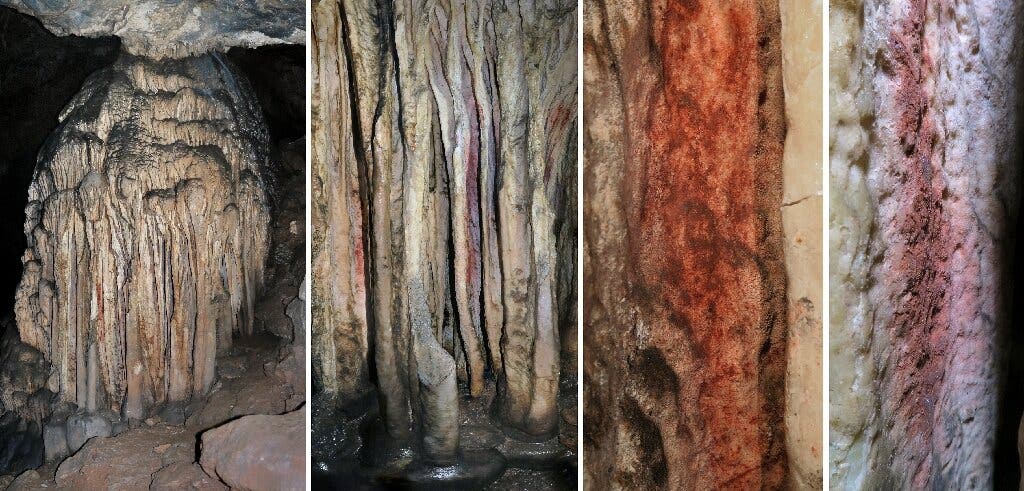Neanderthals in Europe weren’t the simple brutes they’re often portrayed as being, a new study suggests. It confirms that red ochre markings found in a Spanish cave were made by the Neanderthals and probably used for a symbolic or ritual purpose for thousands of years.

The Cueva de Ardales cave in Málaga, Spain, is one of the most impressive and well-preserved examples of Paleolithic cave paintings in southwestern Europe. More than a thousand different representations have been found here, indicative of the cave being inhabited by many generations of early humans.
One stalagmite here was painted red ochre thousands of years before the emergence of modern humans in Europe, according to a new paper, and offers us a glimpse into the history and culture of the Neanderthals.
Man-made
It was first suggested that Neanderthals painted this stalagmite red in 2018, when an initial dating of the pigment showed it’s at least 64,800 years old. However, the results were contested, and “a scientific article said that perhaps these pigments were a natural thing,” explained co-author Francesco d’Errico for Agence France-Presse. It proposed that the markings were the result of iron oxide (iron) deposited by water infiltrating into the cave.
The new study shows that the deposition and composition patterns in this pigment are not consistent with natural processes. It was most likely applied through splattering (mixed with water) and blowing (in a powdered form).
Furthermore, the authors explain that pigment was repeatedly applied to the stalagmite over time, at least over ten millennia.
“[The findings] support the hypothesis that the Neanderthals came on several occasions, over several thousand years, to mark the cave with pigments,” said d’Errico, of the University of Bordeaux.
But they were likely not art in the way we understand the term. The markings themselves are different even from the cave art made by our ancestors thousands of years ago. Rather, the authors explain, these markings were “result of graphic behaviors intent on perpetuating the symbolic significance of a space.”
While the markings do seem to have been culturally or symbolically significant, we don’t actually know why, or what they meant. Even so, the study showcases how the Neanderthals were not necessarily as simple as we’ve come to think of them. They were capable of manufacturing and using advanced tools, making art, and using language.
The paper “The symbolic role of the underground world among Middle Paleolithic Neanderthals” has been published in the journal PNAS.
Was this helpful?



